Growing More Grain: Impacts & Opportunities for Dairy Farmers
New Zealand’s livestock sectors are reliant on imported grain and PKE. Recently completed research asks whether growing more grain in New Zealand is a viable approach for farmers.
New Zealand imports nearly twice as much livestock feed as we grow domestically and recent record prices for imported feed have put this reliance on imported grain and PKE under the microscope.
Recently completed research shows that growing more grain domestically is a viable option to reduce risk associated with reliance on imported grain, and comes with wider benefits to farming systems.
The comprehensive report from AgFirst modelled a range of scenarios with different yield, cost, livestock, and supply situations to review the effects of converting a proportion of pasture into supplementary feed grain crops. They found potential positive impacts for farm profitability, greenhouse gas emissions and nitrogen leaching.
“We ran multiple scenarios with imported, local, and a mix of imported and local feed. When compared to the base model, reducing stocking rate and growing all feed on-farm resulted in substantially lower feed costs and 5%–14% lower milk production. Farm profit was higher in the three North Island regions, the same in Canterbury and lower in our Southland scenario,” says report co-author Raewyn Densley.
Capacity for growth
There is also capacity to grow yields. While local grain yields are high, there is a significant gap between top and average producers and it is likely that growers could increase yields by fine-tuning their management practices.
Aotearoa has an abundance of land suitable for growing grain and existing infrastructure for processing that grain.
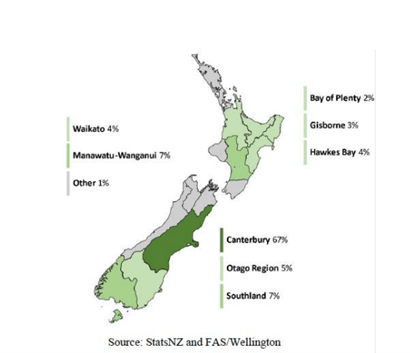
“Right now, importers told us that it is cheaper to move grain from Australia to New Zealand than to move it from the South Island to the North Island. As we increase our national grain production, we would expect to also grow investment in grain processing and infrastructure,” says Densley.
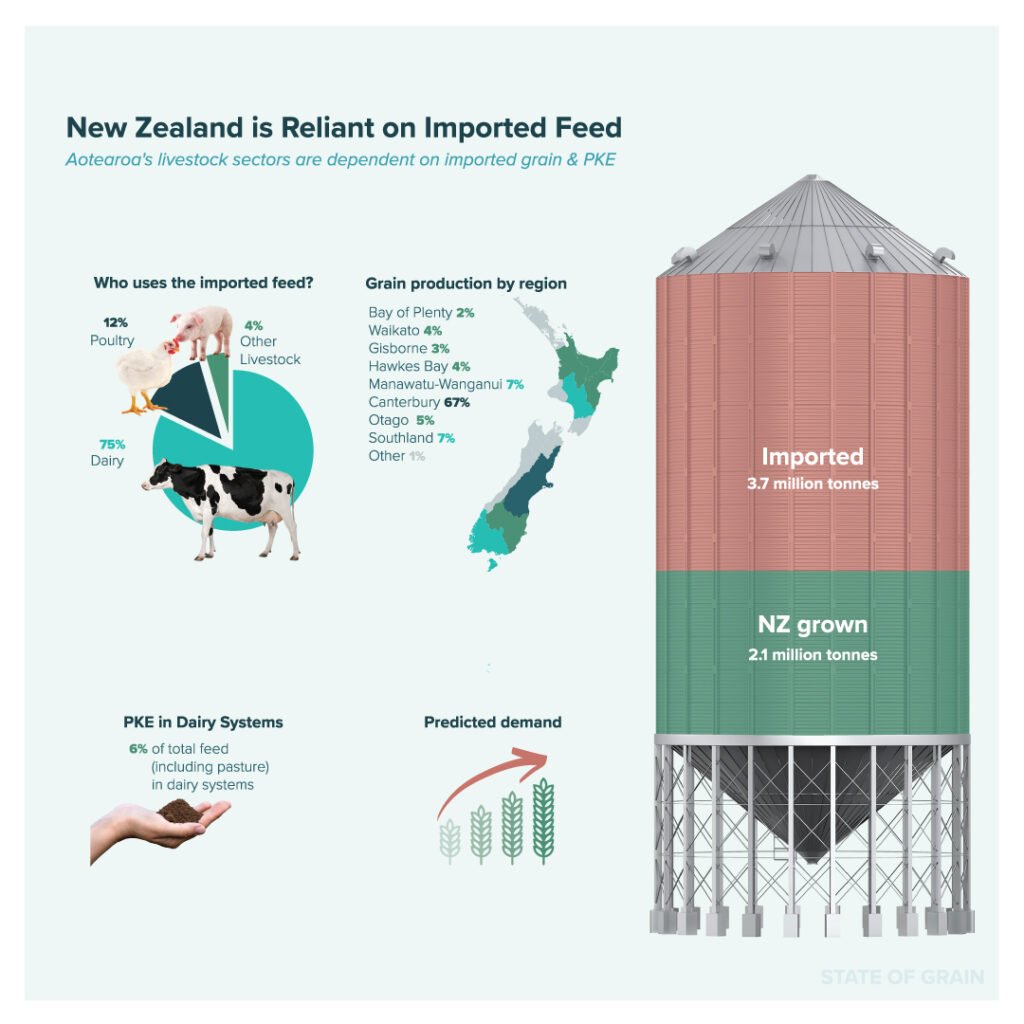
Opportunity for whenua Māori
Aligned with the strong North Island demand, growing more grain, coupled with a vertically integrated animal feed business presents a particularly attractive opportunity for underutilised whenua in Māori ownership.
Of 1.47 million hectares of Māori freehold land in New Zealand, 61% do not have a management structure and are frequently leased out for farming, bringing minimal returns to Māori landowners.
“We worked with representatives from four Māori land blocks in Waikato/King Country. There was a lot of interest in how growing grain for local markets aligns with the values of te ao Māori,” says Densley.
“Modelling for these four blocks showed growing maize rather than leasing land out to third-party farmers increased net profit for landowners by 67–212%, representing a transformational opportunity for these hapū.”
Why do we need to act?
The report presents an in-depth analysis of the current global market for grain, predicted trends, and the implications for the dairy and poultry sectors.
“Globally, grain stocks are under pressure. Demand is high, particularly from China and for non-feed uses such as ethanol, and we’ve seen the supply of grain badly affected by weather events, ongoing shipping constraints, and geopolitical issues,” Densley says.
PKE, which represents 8% of total dairy feed (including pasture) in New Zealand, is relatively stable but changing demand for palm oil and adverse weather could also result in reductions in supply, with significant implications.
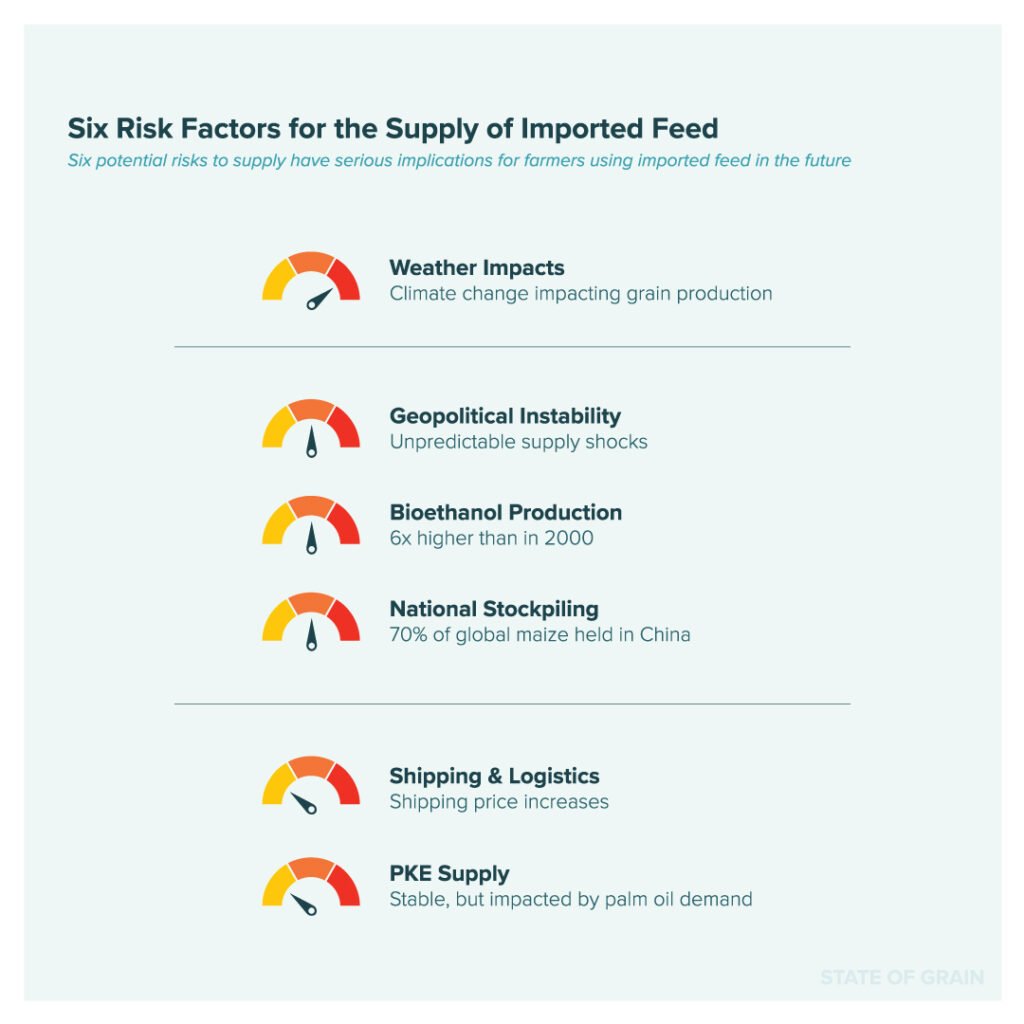
“The risk for farmers is two-fold. First, we’re expecting higher imported feed prices which will reduce profitability, and second, we currently import enough PKE to meet the total feed requirement of around 8% of the nation’s dairy cows and grain for a large proportion of poultry. A shortage could ultimately mean farmers would need to destock,” says Densley.
The risk won’t go away any time soon. New Zealand’s demand for feed is predicted to continue to grow, especially given the new winter grazing regulations and nitrogen cap. Growing more feed domestically is a viable option for reducing this reliance.
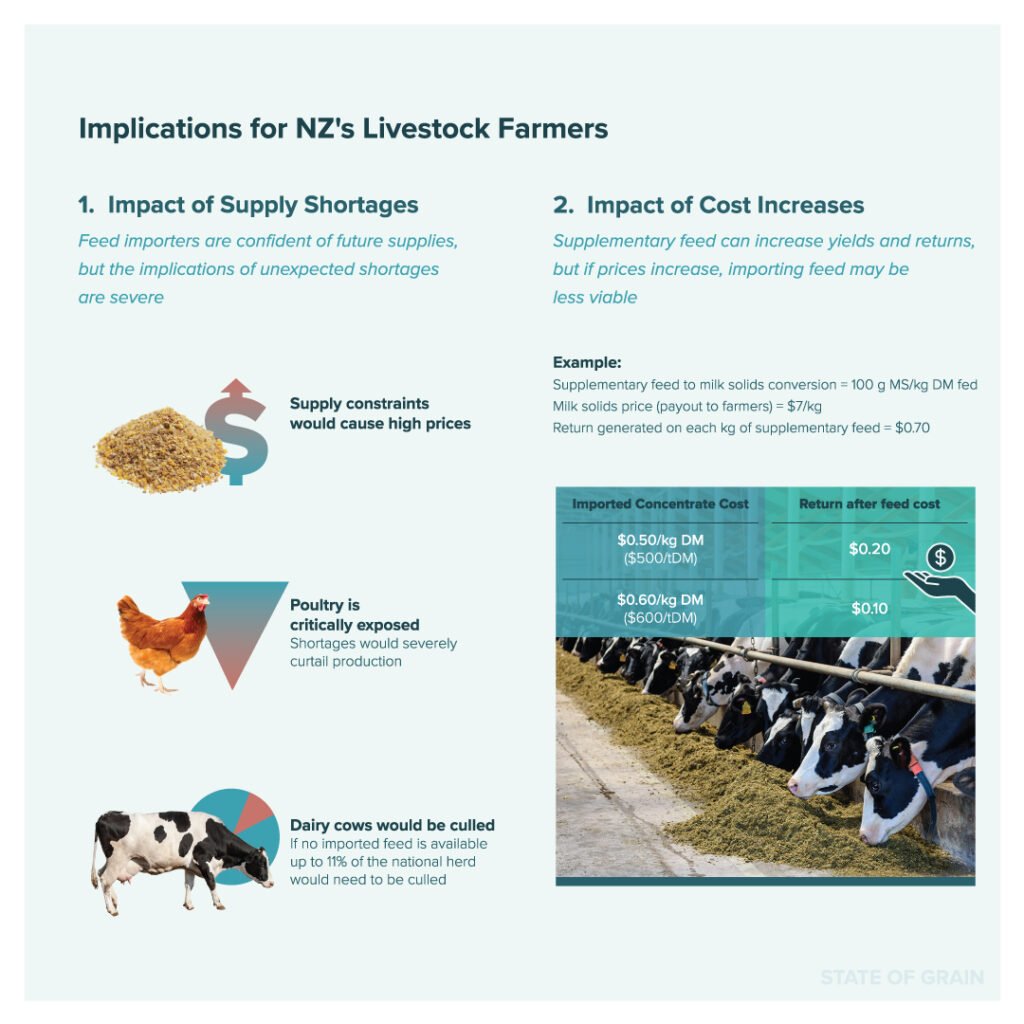
Where to next?
To increase our resilience to global grain market price and supply challenges, Aotearoa New Zealand needs to encourage the transition of suitable land into grain production, and to promote the economic and environmental advantage of growing grain to targeted landowners. In particular, there is a significant opportunity to support Māori landowners to identify the opportunity to grow grain on their whenua.
“Stakeholders from across the farming sector, including Fonterra and other large agribusinesses, are supportive of moves to change dairy farm systems,” says Densley. “These models show that changing farm systems to grow more feed on farm reduces risk and environmental impact, and increases profit – it’s a practical, real-world solution that we can implement quickly.”
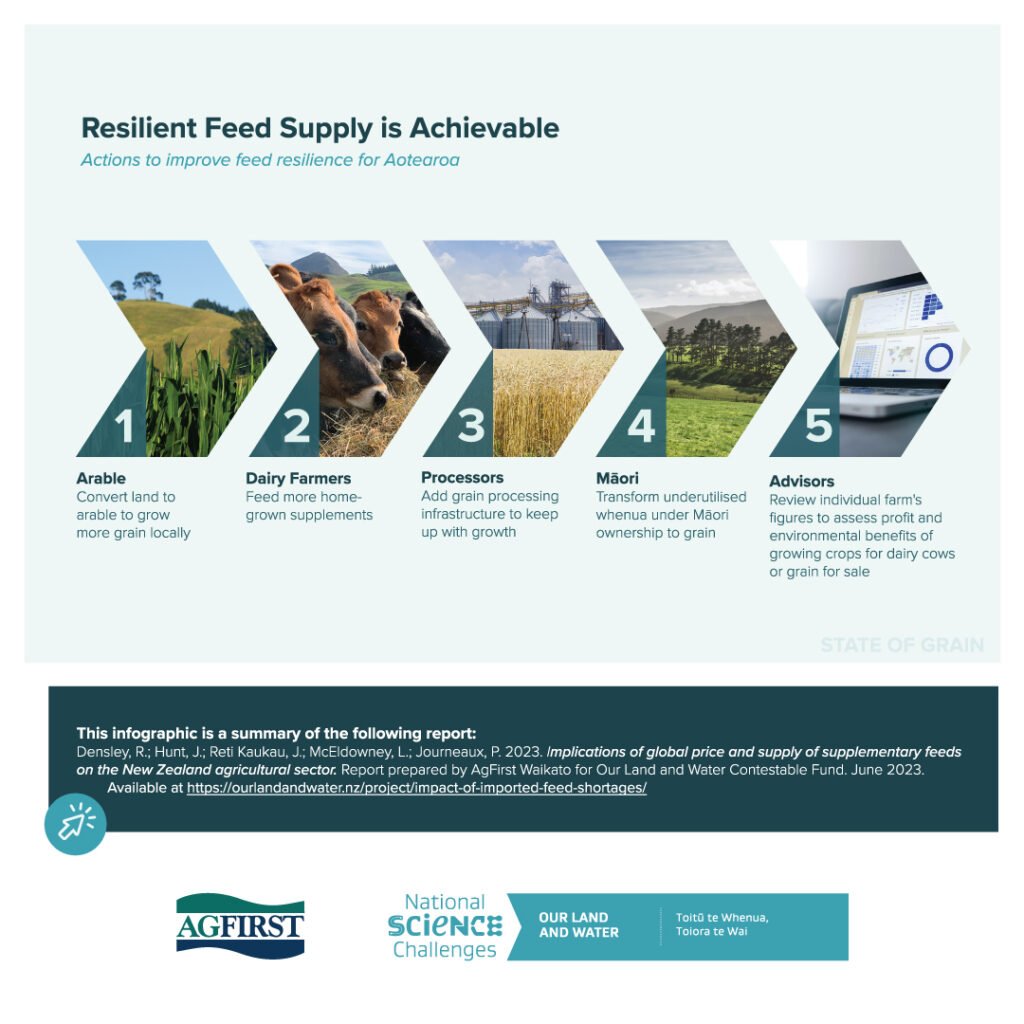
More information:
Author
One response to “Growing More Grain: Impacts & Opportunities for Dairy Farmers”
Kia ora. We have a whenua Maori Trust, Te Orewai Te Horo Trust, managing our large, unproductive whenua block. We have challenging topography, surrounding land use is large pine foresters to the north of our block and dairy to the south. We lease some whenua for minimal return as grazing to local dairy farmer. Previous research undertaken through TPK Whenua Maori fund recommended several small blocks as having cropping potential,but nothing eventuated from that work. It would be good to understand/learn more about potential land use/ cropping potential on our block and how to start that, as well as local processing support for cropping in our area, 4pkm North West of Whangarei.
 View Our Strategy Document 2019 – 2024
View Our Strategy Document 2019 – 2024




Leave a Reply